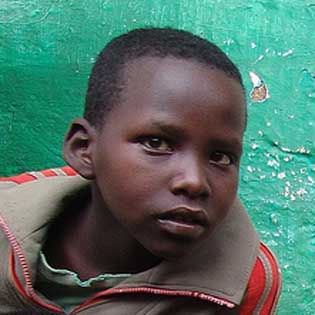Somali Children in Minnesota and Autism
 A child’s lifelong maturation rates are set several weeks before birth by the mother’s testosterone levels. A mother with high testosterone gives birth to low testosterone males and high testosterone females. A low testosterone female raises high testosterone males and low testosterone females. Numerous factors influence a mother’s testosterone levels, including age, stress, exercise, smoking, alcohol, drugs, touch, diet and light. Radical elevations in a mother’s testosterone level can lead to extreme maturational delay and autism.
A child’s lifelong maturation rates are set several weeks before birth by the mother’s testosterone levels. A mother with high testosterone gives birth to low testosterone males and high testosterone females. A low testosterone female raises high testosterone males and low testosterone females. Numerous factors influence a mother’s testosterone levels, including age, stress, exercise, smoking, alcohol, drugs, touch, diet and light. Radical elevations in a mother’s testosterone level can lead to extreme maturational delay and autism.
This scheme is part of a larger picture of how humans evolve. Changing maturation rates over generations send societies in one of two directions: matrifocal or patrifocal social structures. Low testosterone males mating with high testosterone females form the foundation of matrifocal social structure. High testosterone males pairing with low testosterone females make up patrifocal social structure. When mothers today exhibit matrifocal features, high testosterone, while exposed to environmental influences that elevate their testosterone further, male children with delay tendencies may shift into extreme delay.
This theory predicts that females with autism will not exhibit maturational delay, but maturational acceleration accompanied by elevated testosterone. When a mother’s testosterone level elevates, she not only influences the maturation rates of her children, she sends them on a journey into the past. Maturation rates unfold on two scales, on the scale of the individual unfolding in a lifetime–personal ontogeny–and on the scale of how our species has evolved over the last few thousand generations. We have recently (25,000 years ago to the last couple hundred years) evolved out of matrifocal social structure to patrifocal social structure. We reverse the process by reversing our maturation rates, reproducing that path we took to arrive in the present. Elevating mother’s testosterone, we instill ancient ontogenetic pathways, propelling our children back in time to when language was still new. For males, backwards is lowered testosterone and maturational delay. For females, backwards is raised testosterone and maturational acceleration.
Light influences testosterone levels via the pineal gland, which regulates testosterone production. Testosterone fluctuations of 30% a day can be observed as thresholds follow diurnal–day & night–cycles, influenced by the availability of sunlight. What happens when a people are shifted away from consistent, daily 30% fluctuations into northern climates where the light in winter is almost nonexistent, in summer almost always there?
Jews and Blacks both display anomalous distributions of testosterone in males. Both Black and Jewish males (studies were conducted with only males) showed either very high or very low testosterone levels. Both these cultures were transplanted from equatorial regions to climates with light-fluctuating seasons.
One would predict that both these ethnicities would exhibit a higher percentage of conditions characterized by maturational delay, such as autism.
Somalis immigrating to Minnesota are discovering radical rates of autism among their children. This theory predicts that these autistic children’s birthdays should cluster in certain times of the year. If mother’s light-influenced testosterone rates are particularly high at six weeks before birth, intervention to lower rates (for example, modifying light exposure) would be prudent.
There is also the possibility that the father’s testosterone levels influence the child’s rates of maturation. There are no studies to support this possibility other than studies concluding that older parents are more likely to give birth to autistic children. (Women experience high testosterone with age, males lower testosterone.) It could be estimated at what seasons a fathers testosterone rates are lowest at conception, and compare that to when mother’s testosterone is highest six weeks before birth and look for the impacts of overlap. It may be that both mother and father are having an effect.
There are also possibilities that autumn September through October allergy seasons are influencing testosterone levels impacting embryo’s maturation rates.
Light and testosterone are related. Many things in our environment influence testosterone levels. Understanding autism involves recognizing how testosterone is influenced and realizing how this influence connects to how we evolved.
…
Proceed to author’s FREE book download on this subject (The book is called Evolution, Autism and Social Change). 10 minute introductory video here.
Andrew Lehman on 11/25/09 in Evolution, featured | 2 Comments | Read More
Comments (2)


[…] to the possible origins of autism. Consider the emergence of autism among Somali Minnesotans. (Click here to note the autism-inducing implications of equatorial populations migrating to extreme Northern […]
Hello,
I don’t think this child in this story is from Somalia. Do you have pictures of actual Somali kids. thanks!